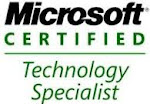Recently I got a chance to explore some of the third party
tool to migrate the content form SharePoint, Office 365 sites. LepideMigrator for
Documents, one of the best tool to migrate the content from SharePoint. I
have seen multiple features to migrate the content from SharePoint, Office 365
environments including Exchange/office 365 public folders.
LepideMigration tool supports both client and server
operating systems including WindowsXP/ 7 /8 , Windows server
2003/2003R2/2008/2008R2/2012/2012 R2 for SharePoint 2013 Foundation/Server/
Office environments. It supports all the versions of exchange servers and
outlook to migrate the content. You can see the prerequisites and download
details here.
We have two types of licensing models for this tool. In Subscription License type,
we can get the product for a period of time. We have to renew the product
license once after the period. Using Perpetual License, we can use the product without
expire. For this type we don’t have expiry period.
After installing the tool we can see following screen.
To work with this tool, we need to have Admin permissions to
the user who runs the application. In Exchange server user need access all the
mail boxes. To add the site collection the tool, click on Ad New Site under
File tab. Right click on SharePoint server, select Add new SharePoint site.
This will prompt us Addd new Site window for project name, site address and
user credentials details. To enumerate the complete Site Collection, click on
“Find Site Collection” button, provide Central Admin URL with username and
password details. Click on Next button. At the end tool prompts with another
window requesting username and password details to connect the server. Provide
username and password, click on Ok to connect the server.
We can get the all the web application details as shown the
image below.
Select the web application and click on Next to view all the
site collections. Click on Finish button to view the web application and site
details as shown the image below.
In the Same way we can connect File system, Public folders
by using the options under file tab using the steps shown in this document.
Before starting migration, we can validate the SharePoint
site. This is a great feature comes with this tool. We have the option to
validate the file size, invalid characters, blocked file types and names and
type of the files. After specifying source details, we have to specify the
destination where we need to move the files and map the files before running
the migration. If we are running the migration for file system to SharePoint
site, we can see the dialog box including all the files and folders to migrate
to SharePoint.
After checking the tool for some time I have observed lot of
features. We got a great tool to migrate the documents in SharePoint, File
system and exchange servers. Here are top features,
Universal tool for all
migrations: By using LepideMigrator tool, we can migrate
the content form SharePoint, File system and exchange servers.
Analyzing the details before
starting migration: As I said
earlier, we can validate the SharePoint site/ File system details before
starting the migration. We can have the options to validate the details before
running migration. We can get the details about the issue that might face in
the migration.
Validating data according to
SharePoint: We have options
to validate the data according the SharePoint. This is one of the feature I
like most, you can analise whether the selected content can be uploaded to the
SharePoint server or not. You will be able to know what all issues may come
during migration.
Migrating metadata: Metadata is responsible for searching
for any documents in SharePoint. Customers are very specific about search as
they have lot of data on their environment. So we must get the metadata when we
are migrating the content. LepideMigrator for Documents helps us transferring
attributes not even to file to folder, email, contact etc. also.
Adding multiple sources same
time: By using LepideMigrator for Documents we can
connect multiple sources including file servers, office 365 folders, Public
folders, mail boxes and achieved mail boxes in the process of migration.
Managing permissions: In SharePoint environments we have
lots of private/sensitive data that many of the users are not allowed to see.
When migrating the documents from source to destination permissions should not
break. LepideMigrator copies the permissions same as source.
Schedule migration: We can schedule the migration for a specific
date, time by using LepideMigrator. Migration will run that time without manual
assistance. This reduce the outage for SharePoint site.
Bulk Migration: Last but not least, this the best feature in LepideMigrator
tool. We can select all the files in one click to process bulk migration. This
tool will generate .csv file for all the content selected to migrate.












.jpg)









